A 51nanoFI beam source that can be switched between two different states, non-stabilized (without RF-modulation) or stabilized (with RF-modulation), is used as a fiber-coupled laser source. The radiation is split using a 50/50 fiber-optical beam splitter.
51nano: General information
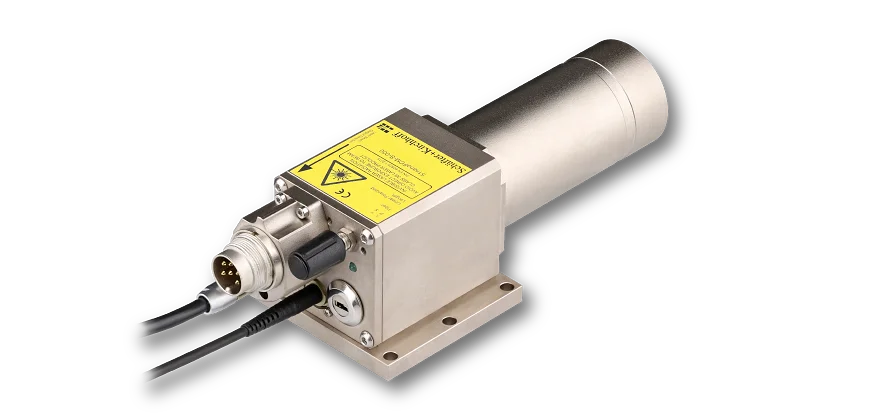
- Low noise laser module (typ. < 0.15 % of Po (RMS, Bandwidth < 1 MHz))
- Reduced coherence
- Mode hopping free laser operation
Demonstration setups
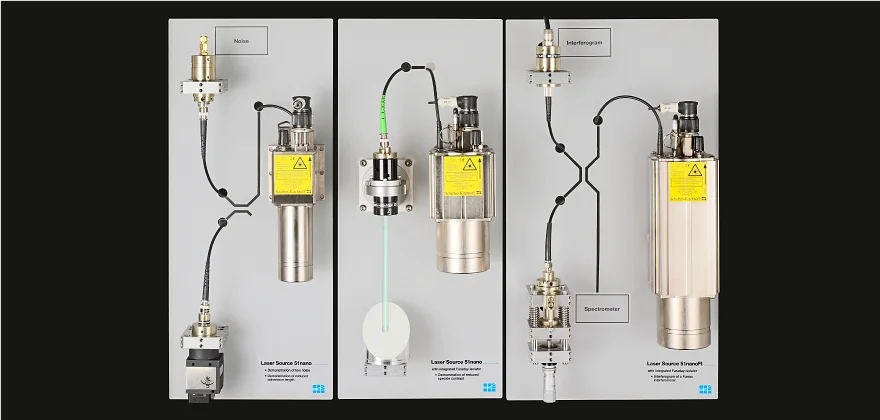
Exhibition setup
- First Setup:
- 1. Demonstration of reduced power noise
- 2. Demonstration of reduced interference
- Second setup:
- 3. Demonstration of reduced speckle contrast
- Third setup:
- 4. Spectrometer
- 5. Fabry-Perot interferometer as application sample
Mode hopping
First Setup: 1. + 2. Demonstration of reduced power noise and reduced interference
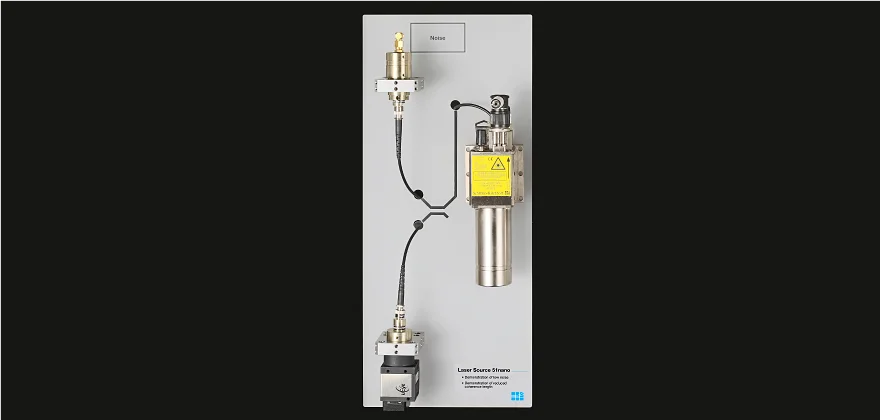
Exhibition setup
Image of the exhibition setup:
In order to illustrate the reduction of power noise, the 51nano is coupled to a fast photo diode, the other part of the radiation is guided to a flat camera sensor.
1. Demonstration of Low Noise
A common laser diode beam source shows a stochastic power noise resulting from, for example, an external cavity between the laser diode and its fiber coupling.
With RF modulation and in normal 51nano operating mode the laser diode is stimulated to emit many modes simultaneously, which leads to the suppression of mode hopping and mean laser power is constant with noise typ. < 0.15 % of Po (RMS, Bandwidth < 1 MHz). Peak noise values exceed 1 % for a standard laser diode.
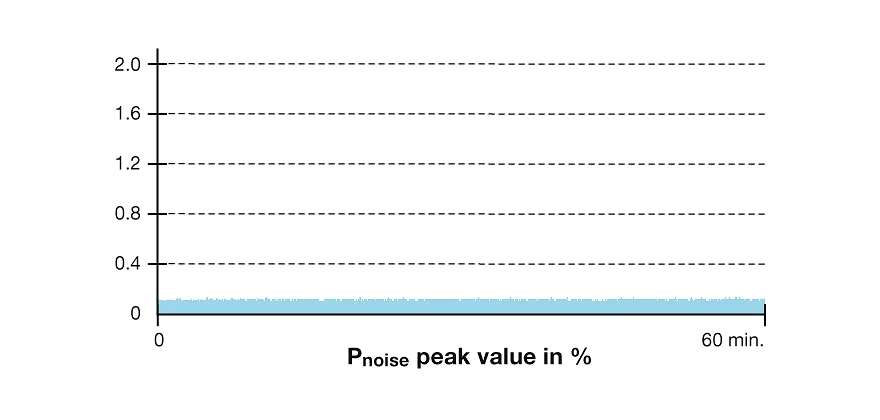
51nano
The RF-modulation results in a constant mean laser power.
Power noise typ. < 0.15 % of Po (RMS, Bandwidth < 1 MHz).
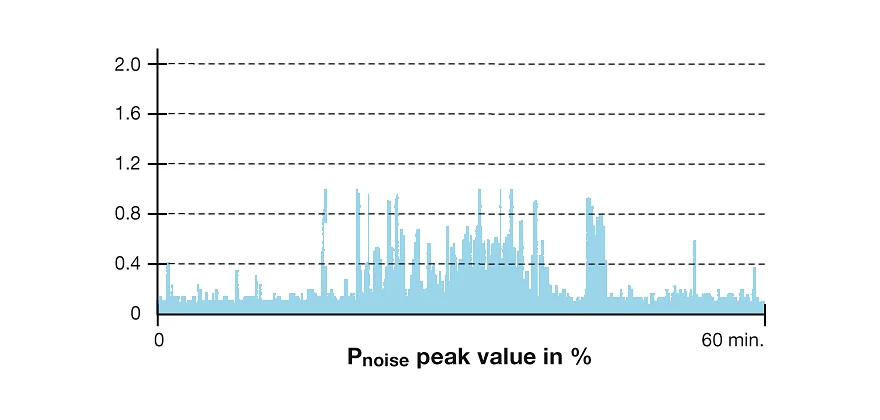
Standard laser
Power noise from a laser diode module.
Mode hopping increases the power noise.
2. Demonstration of reduced Interference
The collimated laser beam of a common fiber-coupled laser source is recorded directly using a flat camera sensor. Its protection window leads to a disturbing interference pattern visible in the collimated beam using a standard laser diode, as a result of internal reflection within the protective glass window of the detector in a CCD area scan camera and interference betwen these reflections.
Since the coherence length of a low noise laser diode module is less than the thickness of the glass the interference is eliminated.
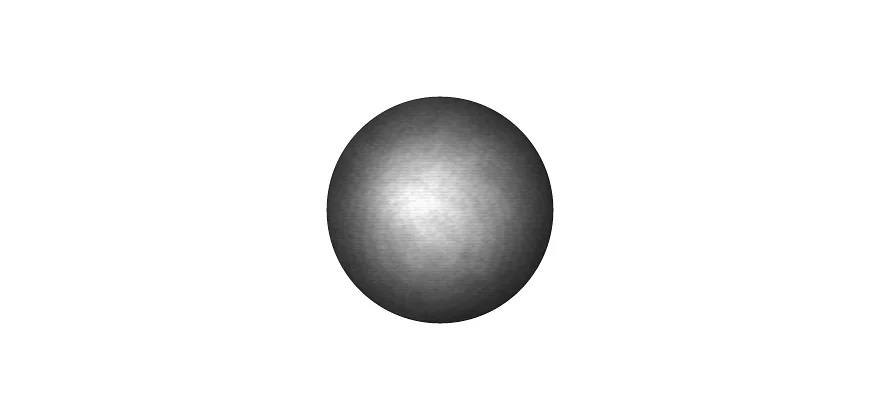
51nano
Intensity distribution of a laser spot at a camera sensor. No interference patterns, despite the camera sensor protection window.
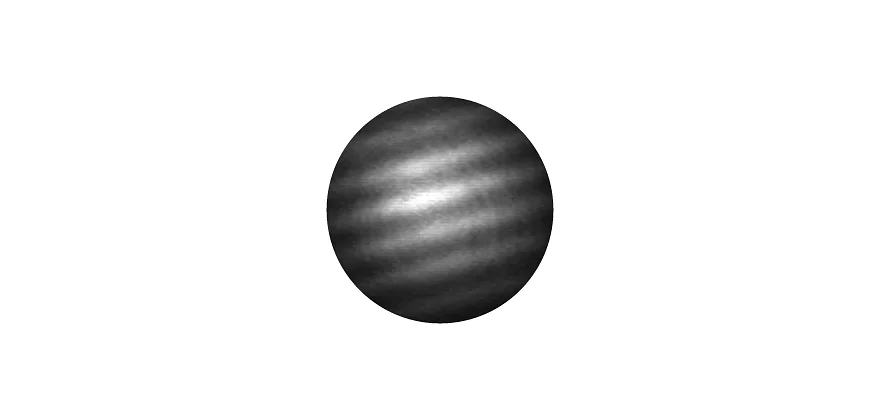
Standard laser
The laser spot recorded directly using a camera sensor, with its protection window generating a disturbing pattern of interference.
Second setup: 3. Reduced speckle contrast
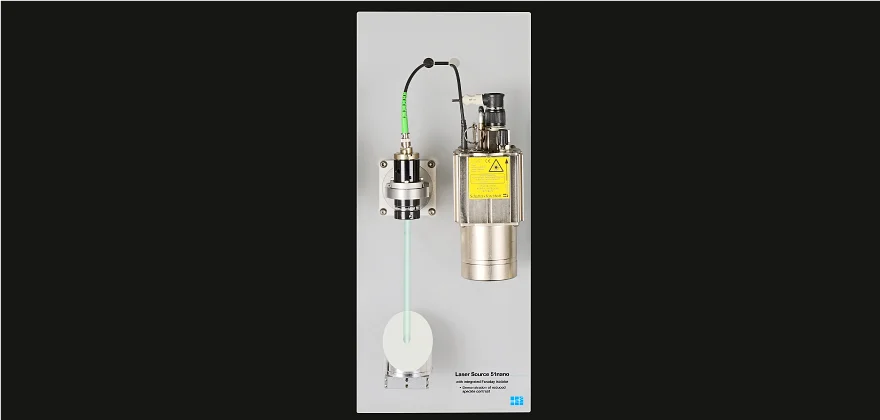
Exhibition setup
The fiber-coupled laser source is connected to a collimator with a large collimated beam diameter, and the collimated beam is directed to a piece of paper.
3. Demonstration of reduced speckle contrast
- Spot size
- Size of the aperture of the optics
- Measurement geometry
This means a general statement that low coherence automatically leads to less speckle is not possible.
- For thicker laser lines and larger laser spots when using a fully coherent (standard) laser source, the laser speckle contrast is 1 and there are areas of zero intensity within a laser spot. For a 51nano laser source the emission from multiple laser modes results in a reduced coherence length, and the speckle contrast and size are also less.
- For smaller laser spots this benefit is less relevant and there might be little to no difference in speckle behaviour.
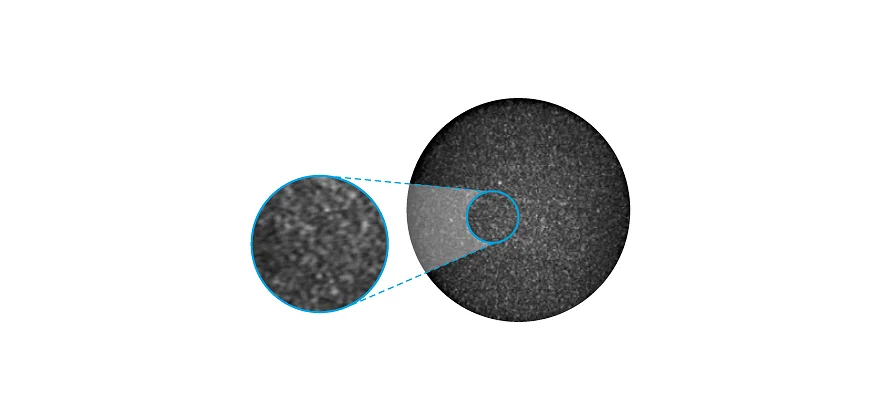
51nano
Low speckle contrast due to reduced coherence length in a large laser spot. Note that speckle contrast and size generally depend on factors such as spot size and the aperture of the optics.
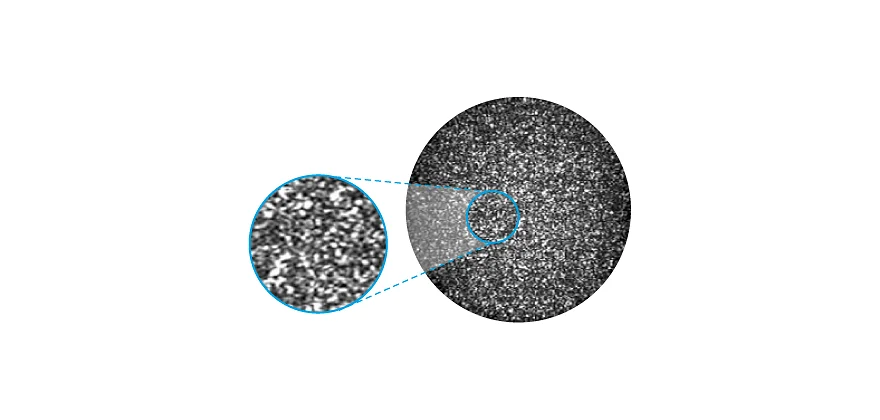
Standard laser
A standard laser diode module produces a large laser spot with speckle. Note that speckle contrast and size generally depend on factors such as spot size and the aperture of the optics.
Third setup: 4.+ 5. Spectrometer and Fabry-Perot interferometer as application sample
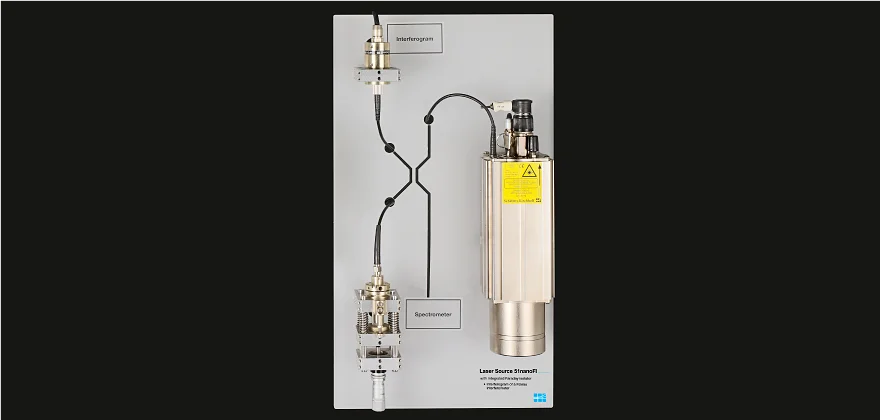
Exhibition setup
A 51nanoFI beam source that can be switched between two different states, non-stabilized (without RF-modulation) or stabilized (with RF-modulation), is used as a fiber-coupled laser source. The radiation is split using a 50/50 fiber-optical beam splitter. One portion is directed to a spectrometer to analyze the spectral power density of the source. The other part is used for the Fizeau interferometer.
4. Spectrometer
Without RF-modulation, the laser jumps stochastically between several emitting modes. Using RF-modulation, numerous modes are excited within the gain profile of the resonator, producing a broad spectrum with about 1.5 nm FWHM (full-width at half-maximum).
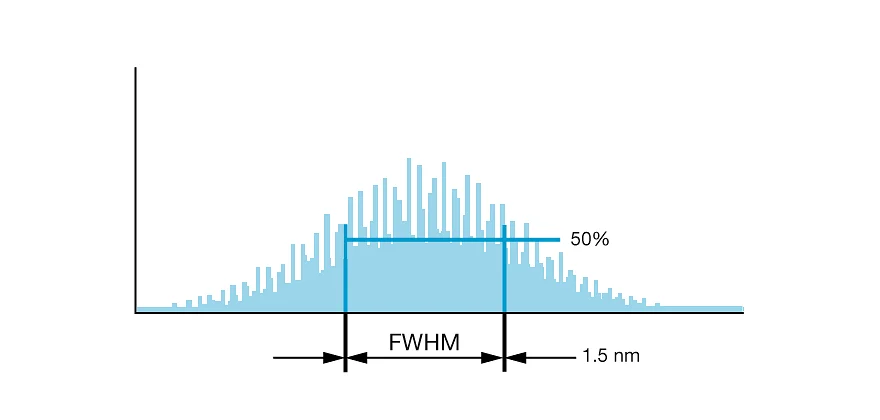
51nano
Broadened spectrum (~1.5 nm FWHM) with reduced coherence length (0.3 mm) as a result of using RF-modulation.
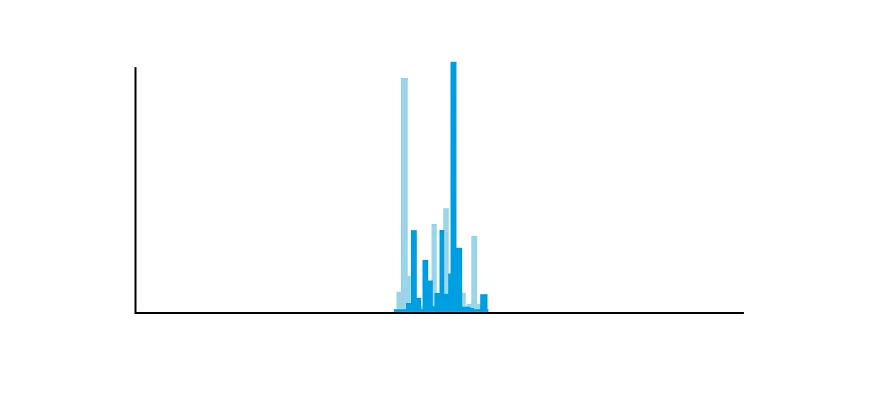
Standard laser
Mode hopping: temporal jumps between modes. The short-term coherence of individual modes is >1 m, but effective coherence length is smaller.
5. Fabry-Perot interferometer as application sample

Fabry-Perot interferometer: Schematic setup

51nano
Fabry-Perot interferometer signal: Stable signal without any disturbing interferences.

Standard Laser
Fabry-Perot interferometer signal: Instable signal with disturbing interferences.